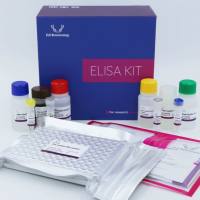Gene Transfer into Cystic Fibrosis Airway Epithelial Cells
互联网
互联网
相关产品推荐

SARS-CoV-2 (2019-nCoV) Spike Gene ORF cDNA clone expression plasmid (Codon Optimized)
¥4690

Human CFTR(Cystic Fibrosis Transmembrane Conductance Regulator) ELISA Kit
¥1960

TMPRSS11A/TMPRSS11A蛋白Recombinant Human Transmembrane protease serine 11A (TMPRSS11A)重组蛋白Airway trypsin-like protease 1;Epidermal type-II transmembrane serine protease;Esophageal cancer-susceptibility gene 1 protein蛋白
¥2328

MKN45人低分化胃癌细胞|MKN45细胞(Human Poorly Differentiated Gastric Cancer Cells)
¥1500

Recombinant-Rhizobium-sp-Probable-conjugal-transfer-protein-trbItrbIProbable conjugal transfer protein trbI
¥12614
相关问答

